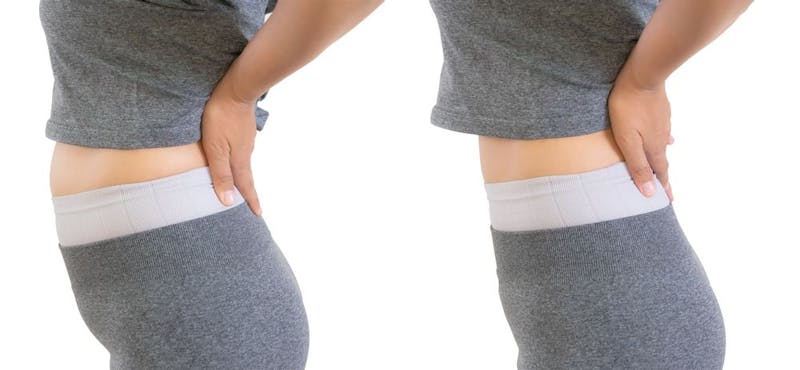
The journey of body transformation is a personal one. For some, this journey may involve a tummy tuck, a surgical procedure that contours the abdominal area by removing excess fat and skin. Also known as abdominoplasty, this surgery is often chosen by individuals who have lost significant weight or women who have gone through pregnancies and have excess skin that cannot be eliminated by diet or exercise.
While the aesthetic benefits of a tummy tuck are widely known, the process is more than just skin deep. One of the crucial aspects of this procedure involves the repair of abdominal muscles, which may have been stretched or damaged due to weight gain, pregnancy, or aging. The muscle repair process in a tummy tuck can significantly enhance the patient’s posture, abdominal tone, and overall appearance.
What is the Muscle Repair Process?
The muscle repair process is a natural biological response that occurs when our muscles experience trauma or injury. This process involves inflammation, repair, and remodeling of muscle tissue, which are critical steps to restore the muscle's function and strength.
The muscle repair process is triggered by the intentional surgical trauma inflicted on the abdominal muscles. The surgeon tightens and stitches stretched or separated muscles, creating an internal corset that results in a flatter, more toned abdomen.
It’s important to remember that muscle repair is not an instantaneous process. It takes time and is influenced by several factors, including your overall health, age, and the extent of muscle damage or separation. Understanding this can help set realistic expectations about your recovery following a tummy tuck.
The Role of Muscle Repair in a Tummy Tuck
The role of muscle repair in a tummy tuck goes beyond aesthetics. It contributes to a flatter, firmer abdomen, but it also plays a crucial role in improving the patient's physical health.
When the abdominal muscles are stretched or separated – a condition known as diastasis recti – it can lead to a host of problems, including back pain, poor posture, and even hernias. Repairing these muscles during a tummy tuck can alleviate these issues, enhancing the patient's comfort and quality of life.
Muscle repair during a tummy tuck can also enhance functional strength, benefitting the patient's physical abilities and daily activities.
Understanding the Anatomy of the Abdominal Muscles
The abdomen is primarily composed of four muscle groups: the rectus abdominis, transverse abdominis, and the internal and external obliques.
The rectus abdominis is the muscle group often referred to as the 'six-pack'. This muscle group is the one most affected by pregnancy or significant weight gain and is the primary focus during the muscle repair part of a tummy tuck.
The transverse abdominis and the obliques act as natural corsets, providing support and stability to the spine. While these muscles may not be the primary focus during a tummy tuck, your surgeon may tighten them if necessary.
Understanding the anatomy of your abdominal muscles can give you a clearer picture of what goes on during a tummy tuck and why the muscle repair process is so crucial.
The Tummy Tuck Surgery: Procedure and Muscle Repair
In a typical tummy tuck procedure, the surgeon first removes excess skin and fat from the abdominal area. Once this is done, they then proceed to the muscle repair process.
The surgeon makes an incision from hip bone to hip bone, just above the pubic area, to access the underlying muscles. The stretched or separated rectus abdominis muscles are then brought together and stitched into a tightened position. This muscle repair process essentially creates an internal corset, giving the abdomen a flatter, tighter appearance.
The muscle repair process is a critical part of a tummy tuck. Without it, the results would be incomplete, as the underlying issue of muscle laxity or separation would not be addressed.
Post-surgery: What Happens During the Muscle Repair Process?
After a tummy tuck, the muscle repair process continues as part of your body's natural healing response. This process involves inflammation, repair, and remodeling of muscle tissue.
The initial inflammation stage involves an increase in blood flow to the surgery area, which brings nutrient-rich blood to aid in healing. The repair stage involves the removal of damaged tissue and the production of new muscle fibers. Finally, the remodeling stage involves the strengthening and maturing of these new muscle fibers.
This post-surgery muscle repair process can take several weeks to months, depending on individual factors such as overall health, age, and the extent of muscle repair done during the surgery.
How to Aid the Muscle Repair Process After a Tummy Tuck
Aiding the muscle repair process after a tummy tuck is paramount for optimal results and a smooth recovery. Here are some ways you can help your body heal:
Follow your surgeon's advice: Your surgeon will provide specific post-operative instructions. Following them closely can significantly improve your muscle repair process and overall recovery.
Nutrition: Eating a balanced diet rich in protein, vitamins, and minerals can support muscle repair and overall healing.
Rest: Giving your body ample time to rest and recover is crucial. Overexertion can hinder the muscle repair process and even lead to complications.
Exercise: Gentle exercises, as advised by your surgeon, can improve blood circulation, facilitating the muscle repair process. However, strenuous activities should be avoided until your surgeon gives you the all-clear.
Hydration: Keeping your body hydrated can aid in the healing process.
Avoid smoking: Smoking can impede the healing process and increase the risk of complications.
The Importance of Understanding Muscle Repair in Tummy Tucks
Understanding the muscle repair process during a tummy tuck can give you a more comprehensive view of what the surgery involves. It’s not just about removing excess skin and fat but also about repairing and reinforcing the abdominal muscles. This process is crucial not just for aesthetic results but also for functional improvements and a better quality of life.
The journey doesn't end when you leave the operating room. The post-surgery muscle repair process is equally important and requires your active participation. By following your surgeon's advice, maintaining a healthy diet, resting, and slowly reincorporating exercise into your routine, you can aid the muscle repair process and achieve the best possible results.
For more information on the process of muscle repair during a tummy tuck, visit Changes Plastic Surgery & Spa at our San Diego, California office. Call 858-264-3800 to schedule an appointment today.

